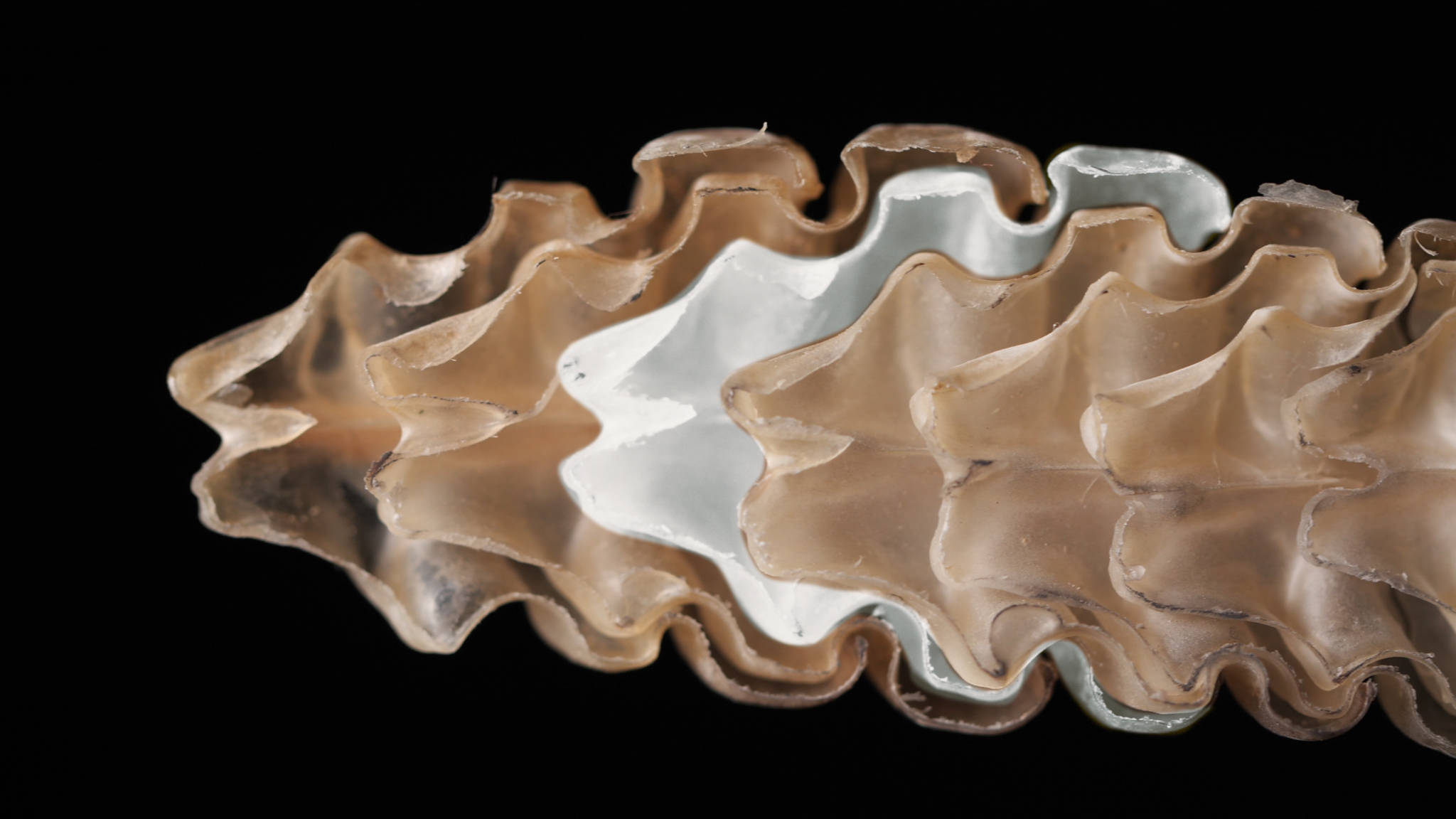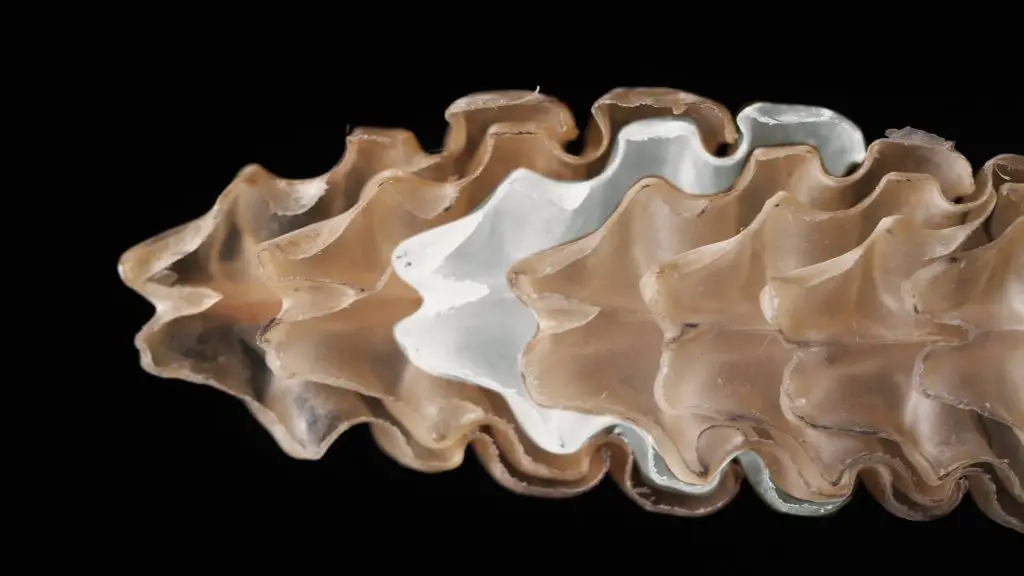Rattlesnakes are fascinating creatures that can be found in various parts of the world. One of the most intriguing things about them is their distinctive rattle, which is used as a warning signal to potential predators and humans alike. But have you ever wondered what exactly a rattlesnake rattle is made of?
The answer is surprisingly simple. A rattlesnake rattle is made up of a series of interlocking segments, which are actually modified scales. As the snake sheds its skin, a new segment is added to the rattle, creating that distinctive buzzing sound we all associate with these venomous creatures.
A rattlesnake rattle is made of a series of hollow, interlocking segments of keratin, the same material that makes up human hair and nails. Each new segment is added each time the snake sheds its skin, and the loose segments inside the rattle knock against each other to create the distinctive rattling sound.

What is a Rattlesnake Rattle Made of?
A rattlesnake rattle is a fascinating piece of natural engineering. Made up of a series of interlocking segments, it creates a distinctive buzzing sound when the snake shakes its tail. But what exactly is a rattlesnake rattle made of? Let’s take a closer look.
Structure of the Rattle
The rattlesnake rattle is made up of a series of keratinous segments, which are similar to the material that makes up our fingernails and hair. These segments are hollow, and each one is slightly wider at the base than at the tip. The segments are connected by a thin layer of keratin, which allows them to move against each other.
Over time, rattlesnakes add new segments to their rattle, which gradually increases in size. The oldest segments are at the base of the rattle, while the newest segments are at the tip. As the snake sheds its skin, the keratin layers on the inside of the segments build up and harden, creating a rigid structure.
Rattle Function
The primary function of the rattlesnake rattle is to warn potential predators of the snake’s presence. When threatened, the snake vibrates its tail rapidly, causing the segments to rattle against each other and produce a buzzing sound. This sound is loud enough to be heard from several feet away, and it serves as a warning to potential predators that the snake is dangerous and should be avoided.
Interestingly, not all rattlesnakes have fully formed rattles. Some species, such as the New Mexico Ridge-nosed rattlesnake, have only a single segment at the tip of their tails. These snakes are still able to produce a buzzing sound, but it is much quieter than that of a fully formed rattle.
Benefits of the Rattle
The rattlesnake rattle is a key adaptation that has helped these snakes survive for millions of years. By producing a loud warning sound, the snake is able to deter predators without having to actually attack them. This saves the snake energy and reduces the risk of injury.
In addition to its warning function, the rattlesnake rattle is also a valuable tool for researchers. By examining the number and condition of segments in a rattlesnake’s rattle, researchers can estimate the snake’s age and track its movements over time.
Rattlesnake Rattle vs. Other Animal Sounds
The rattlesnake rattle is just one example of the many ways that animals use sound to communicate. While some animals, such as birds, use complex songs to attract mates or establish territory, the rattlesnake’s warning sound is much simpler.
Compared to other animal sounds, the rattlesnake’s rattle is also relatively easy to produce. The snake simply needs to vibrate its tail, while other animals may require complex vocalizations or complicated muscle movements to produce their sounds.
Rattlesnake Rattle in Popular Culture
The rattlesnake rattle has long been a symbol of danger and warning in popular culture. In Western movies and literature, the sound of a rattlesnake’s rattle is often used to create tension and suspense. The rattle has also been used as a symbol of warning on signs and flags, and as a design element in jewelry and other decorative items.
Despite its fearsome reputation, the rattlesnake is an important part of many ecosystems. By using its distinctive rattle to warn predators away, this fascinating reptile has adapted to survive in some of the harshest environments on earth.
Frequently Asked Questions
Here are some common questions about rattlesnake rattles:
How is a rattlesnake rattle formed?
A rattlesnake rattle is formed by a series of keratin segments that are added each time the snake sheds its skin. Each segment is made up of a hollow, hard, and brittle material that is similar to human fingernails. The segments are connected by a thin membrane that allows them to vibrate and produce the rattling sound.
The number of segments in a rattle can vary depending on the age and species of the snake, with some rattlesnakes having as few as 3 segments and others having as many as 30 or more.
What is the purpose of a rattlesnake rattle?
The primary purpose of a rattlesnake rattle is to warn potential predators of its presence. When a rattlesnake feels threatened, it will vibrate its rattle rapidly, producing a distinctive sound that can be heard from a distance. This serves as a warning to potential predators to stay away.
Rattlesnakes can also use their rattle to communicate with other snakes, especially during mating season. By vibrating their rattle in a specific pattern, they can attract potential mates or warn off rivals.
Can a rattlesnake rattle be used to identify a species?
Yes, the shape and size of a rattlesnake rattle can be used to identify the species of snake. Different species have different patterns of scales and segments on their rattles, and some may have a distinctive shape or coloration.
However, it is important to note that not all rattlesnakes have rattles, and some may have lost segments due to injury or shedding. Additionally, some non-venomous snakes may also have similar-looking structures on their tails that can be mistaken for a rattle.
What happens if a rattlesnake loses its rattle?
If a rattlesnake loses its rattle, it will continue to grow a new one each time it sheds its skin. However, it may take several shed cycles to fully regrow the rattle, and the new rattle may look different from the original one.
Even if a rattlesnake loses its rattle, it can still bite and inject venom, so it is important to always exercise caution around these snakes and avoid provoking them.
Can a rattlesnake rattle be used for medicinal purposes?
While some traditional medicines have used rattlesnake rattles for various purposes, such as reducing fever or treating arthritis, there is no scientific evidence to support these claims.
In fact, handling a rattlesnake rattle can be dangerous, as it may still contain venom or bacteria that can cause infection. It is best to leave rattlesnake rattles in the wild and seek medical treatment from a licensed healthcare provider if needed.
What Is a Rattlesnake’s Rattle Actually Made Of?
In conclusion, the rattlesnake rattle is a fascinating piece of nature that has intrigued scientists and nature enthusiasts for centuries. These unique appendages are made up of keratin, the same material that makes up our hair and nails. The rattle is a warning sign for predators and a signal for potential mates, making it an essential tool for the rattlesnake’s survival.
While the rattle may seem like a simple structure, it is actually a complex and sophisticated mechanism that is carefully crafted by the rattlesnake’s body. The segments of the rattle are created each time the snake sheds its skin, and the number of segments can indicate the age and size of the snake.
Overall, learning about the rattlesnake rattle is not only fascinating but can also help us better understand the incredible adaptations that animals make to survive in their environments. By appreciating the unique features of animals like the rattlesnake, we can gain a greater appreciation for the diversity and complexity of the natural world.

